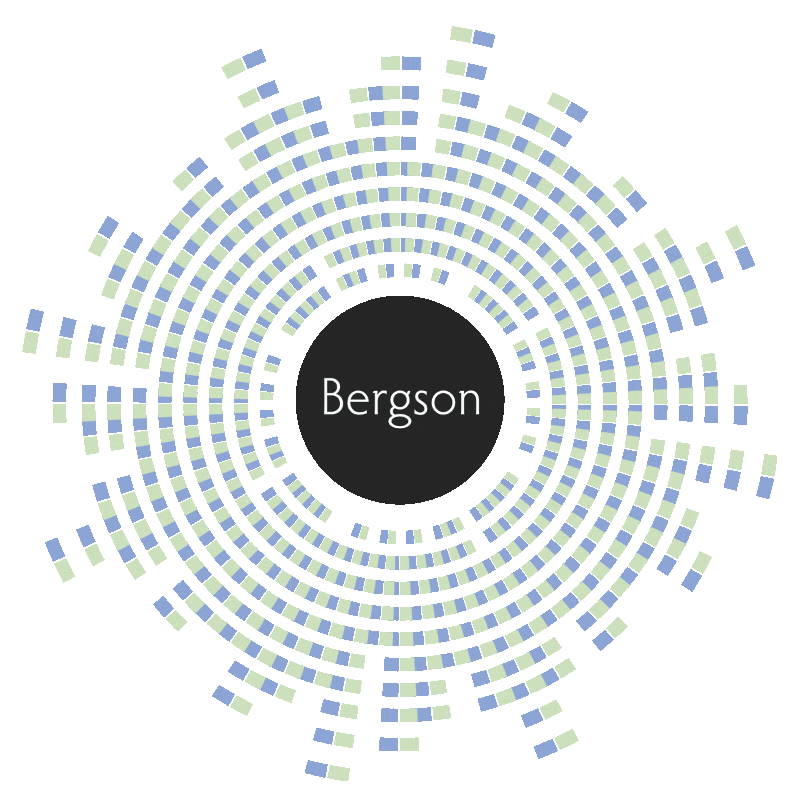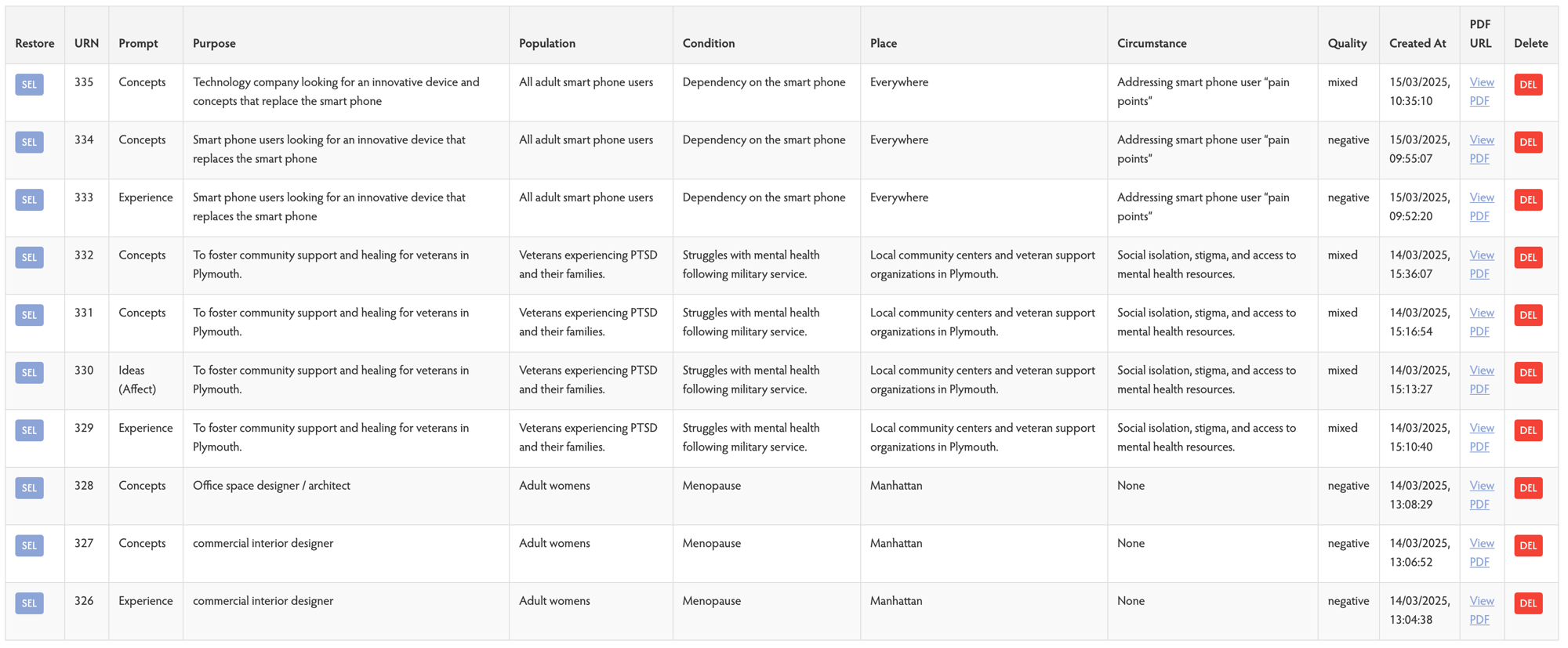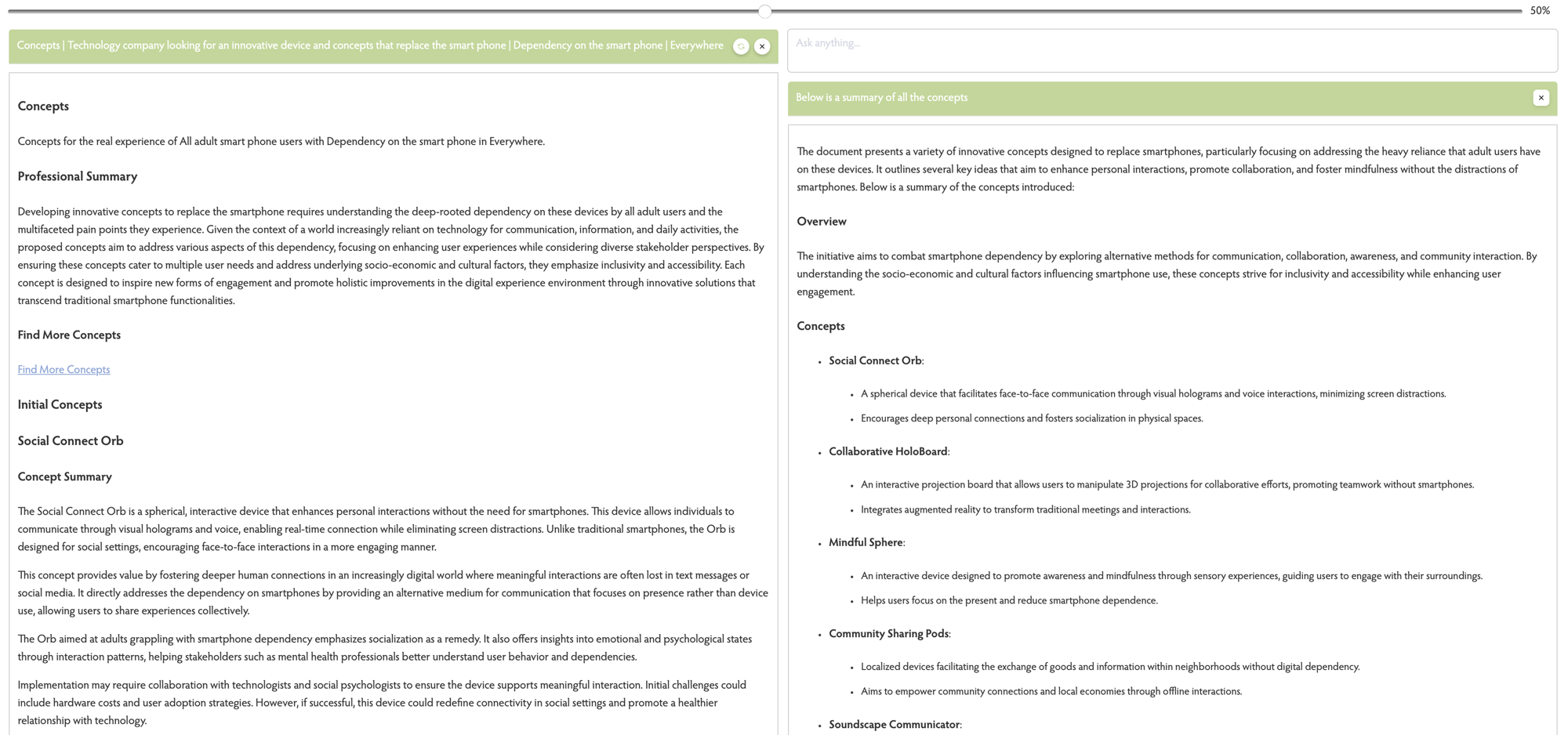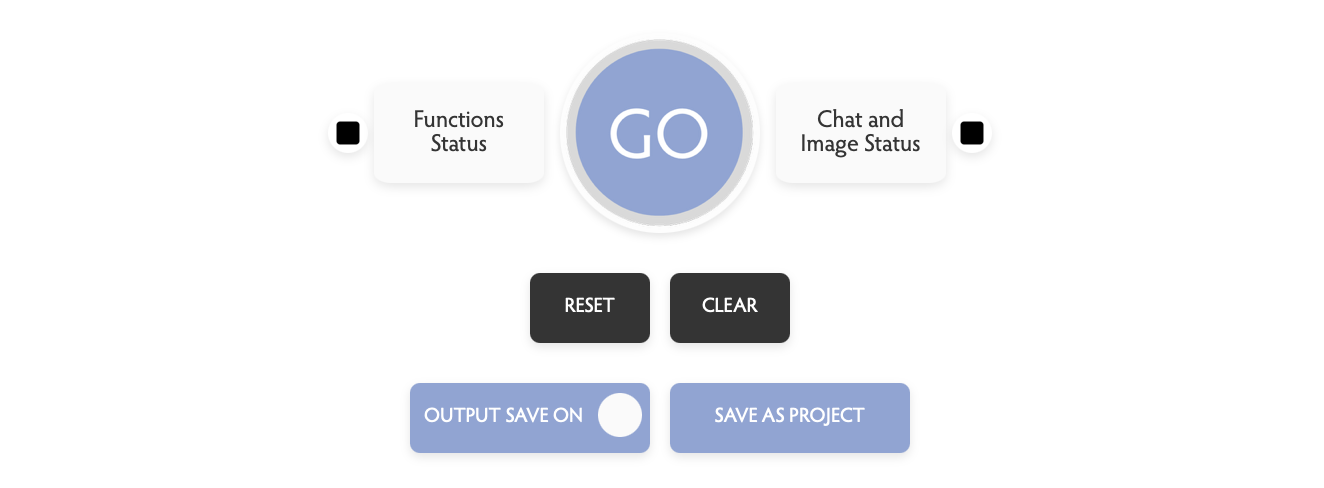
Umio Bergson
See Real Lived Experience. Anywhere.
INSTRUCTIONS
Includes access to all Umio real lived experience thinking, templates, papers and resources
FRAME AN EXPERIENCE
Answer the five framing questions in the FRAME box.
To grab some quick inspiration for your real experience problem framing, simply add some basic contexts in the framing boxes at the top of the interface, then press the "Get Framing Suggestions" button. After a few seconds, a set of relevant problem contexts will automatically be added into the framing boxes. You can keep requesting more Framing Suggestions until you find one that matches your particular interests, as well as edit them or create your own.
When you've decided on your five framing contexts, choose a Quality of Experience and then press the GO button. Your first Bergson experience report will be generated soon after. From there, you can create 1st-person narratives, ecosystem analysis, a report of tendencies that hold back innovation and change, and ideas and concepts.

CHOOSE A QUALITY OF EXPERIENCE
Choose a dominant quality of experience for your framing
POSITIVE
The most positive quality of experience for the framed contexts
NEGATIVE
The most negative quality of experience for the framed contexts
MIXED
Mixed positive and negative qualities of experience for the framed contexts
STUCK
Experiences that are stuck, having run out of ideas, options and sense of hope
TRAUMATISED
Experiences of past or current / ongoing trauma events and becomings
GENERATE BASE EXPERIENCE REPORT
With all the framing inputs defined from step 1 and 2, press the GO button. This will generate the experience report. Each report can take up to 90 seconds to be output. Once output, it will appear in the left-hand frame on the interface. A summary of the response is auto-generated and appears in the right-hand lower frame of the interface. A pdf of your report appears above the containers.

EXPLORE AND CREATE FUNCTIONS
You can now use any of the following Explore and Create functions below. Each generates its own pdf report.
NARRATIVE
Obtain human-attuned AI narratives that express the RLX
ASSEMBLAGES
See hidden assemblages of RLX flows and trajectories
ECOSYSTEM
Reveal the wider RLX field of people, orgs, things, and place
TENDENCIES
Surface patterns of response or belief that limit change potential
IDEAS
Generate ideas to support RLX becoming and movement
DESIGN
Apply Design for RLX principles directly to your framed context
CONCEPTS
Shape meaningful concepts for transitioning the RLX
CREATION*
See, enact and emerge dynamic RLX creation pathways
CAPACITIES*
Identify and build capacities to enact meaningful change

IMAGES
Generate images of experiences, ideas and concepts
*Coming in March 2025
All Learn and Create outputs are stored in your request history (unless you turn the Save? button off). View your history using the View History button at the top of the interface above the FRAME section. Scroll through your history using the MORE button at the foot of each page of history. Reload any report and its output into the interface by selecting the SEL button. You can carry on exploring the outputs with the Learn and Explore functions. Delete any output using the DEL button. Close your history using the Close History button that appears in place of the View History button when viewing your history.

CHAT FUNCTION
Use the chat function located at the top right of the output section to ask anything you like about the any aspect of the experience or the outputs. You can probe more deeply, request comparisons, ask for more ideas, or concepts or anything. Chat outputs appear in the lower right-hand container.

IMAGE FUNCTION
Pressing the Image icon reveals the image drop-down menu. Enter an image description, choose from three size options and over 20 style options, then press Generate. Use the image function to create images from the outputs (including suggested image prompts included in the Concepts function) or using your own specifications. Image outputs appear in the lower right-hand container. Use right-hand click or similar to download and save your images. Images currently use DALL-E3.


CONTROL AND NAVIGATION
You can STOP the processing of a main function or chat-image request at any time using the Stop (black square) buttons on the lefthand right of their respective status circles.
OUTPUT SAVE ON: Turn this off if you do not want your requests and reports saved.
CLEAR: Clears text from all text input fields.
RESET: Reset and clear all outputs.
SAVE AS PROJECT: Saves all current outputs and reports as a project allowing you to return to it later.
CONTROL FUNCTIONS

NAVIGATE USING THE PDF REPORTS
Click on the Quality of Experience icon on each pdf container to jump straight to that response in your outputs. Click on the delete X to delete the pdf output from the container. The pdf will still be saved in your history..
TOKEN RULES
Buy tokens using the link or with the button next to your tokens count when your remaining tokens fall below 10.
| FUNCTION | TOKENS DEDUCTED |
| Framing Suggestions | 0.1 |
| Framed Experience including summary | 3 |
| Narrative including summary | 1 |
| Assemblages including summary | 3 |
| Ecosystem including summary | 2 |
| Tendencies including summary | 1 |
| Design including summary | 2 |
| Ideas including summary | 2 |
| Concepts including summary | 2 |
| Creation including summary | 2 |
| Capacities including summary | 2 |
| Images | 0.5 |
| Chat | 0.1 |